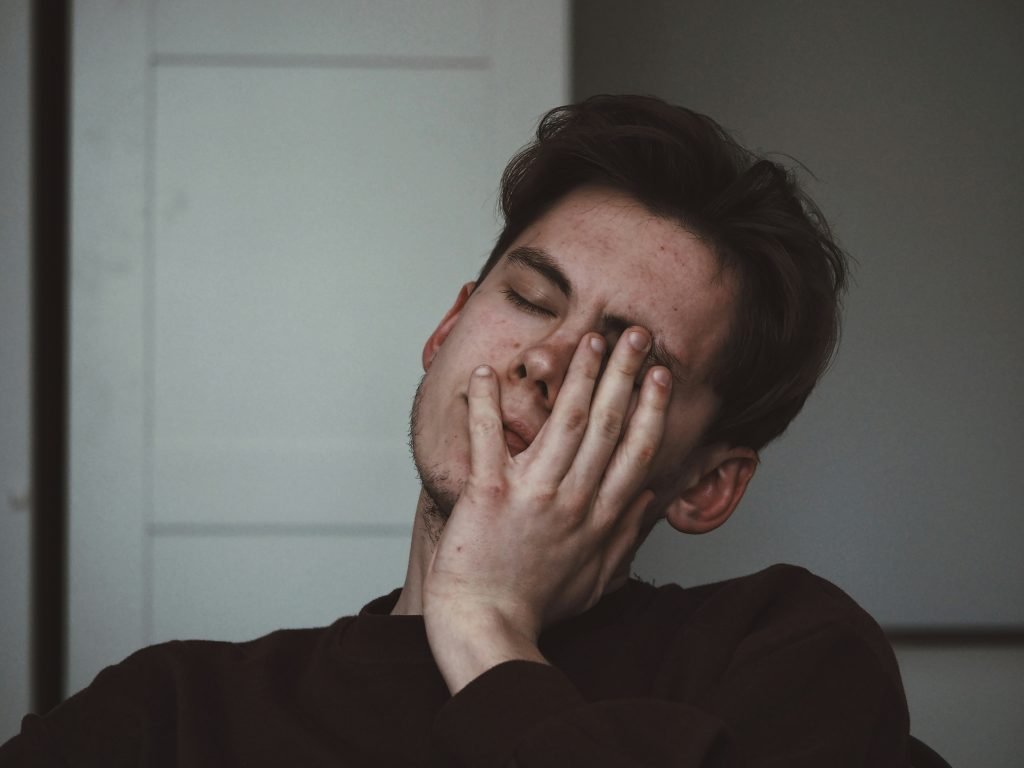Understanding Sleep Challenges with POTS
In this article, we’ll explore ways of How to Sleep Better with POTS. Quality sleep is essential for individuals with Postural Orthostatic Tachycardia Syndrome (POTS), yet many struggle with symptoms that interfere with rest. From blood circulation challenges to temperature regulation issues, sleeping with POTS requires strategic adjustments to improve comfort and minimize symptom flare-ups. By optimizing your sleep environment, adjusting positions, and incorporating supportive practices, you can significantly enhance your nightly rest.
Postural Orthostatic Tachycardia Syndrome (POTS) is a disorder of the autonomic nervous system, which regulates involuntary functions like heart rate, blood pressure, and circulation. At night, these regulatory disruptions can become more pronounced, leading to poor sleep quality and worsened symptoms.
One of the biggest challenges for individuals with POTS is orthostatic intolerance, meaning their body struggles to adjust to changes in position. When lying flat for extended periods, blood pooling in the lower extremities can cause circulatory imbalances, leading to morning dizziness and fatigue. Additionally, fluctuations in heart rate and blood pressure during sleep may contribute to frequent awakenings or a general feeling of unrest.
Do you pre-hydrate with electrolytes before exercising?
Many people with POTS also experience temperature regulation issues, which can interfere with sleep. Some individuals may struggle with night sweats, while others experience extreme cold, making it difficult to maintain a comfortable sleep environment. Choosing breathable bedding, cooling mattress layers, and moisture-wicking fabrics can help mitigate these disruptions.
Why Sleep Position Matters
The right sleep position plays a critical role in managing POTS symptoms and improving circulation overnight. Sleeping in certain positions can reduce blood pooling, prevent excessive heart rate fluctuations, and minimize dizziness upon waking.
For many individuals, elevating the upper body helps support blood flow regulation, preventing excessive drops in blood pressure and reducing morning lightheadedness. Similarly, side sleeping with slight leg elevation can prevent circulatory stagnation, reducing the risk of overnight blood pooling.
By adjusting sleep posture and incorporating supportive pillows, individuals with POTS can achieve more restful, uninterrupted sleep, leading to improved symptom management and daytime functionality.
Best Sleep Positions for POTS
Finding the right sleep position is crucial for individuals with Postural Orthostatic Tachycardia Syndrome (POTS). Proper positioning can support circulation, prevent excessive heart rate fluctuations, and reduce dizziness upon waking.
Elevated Upper Body Position
Raising the upper body slightly can improve blood circulation, minimize dizziness, and reduce orthostatic intolerance in the morning. A wedge pillow or an adjustable bed frame helps maintain a gradual incline, allowing for better cardiovascular stability overnight. This position ensures that blood does not pool excessively in the lower extremities, making waking up more manageable.
Side Sleeping with Leg Elevation
Sleeping on the side is often one of the most comfortable and supportive positions for individuals with POTS. Adding leg elevation improves circulatory efficiency, reducing blood pooling in the lower extremities. Placing a pillow beneath the knees or using compression garments can further enhance venous return, lowering the chances of morning lightheadedness.
Back Sleeping with Slight Incline
For those who prefer sleeping on their back, maintaining a gentle incline can optimize blood flow and ease autonomic symptoms. This position prevents excessive pressure on the chest, ensuring better respiratory and circulatory function during sleep. Using an adjustable pillow or mattress elevation can make this posture more effective without compromising comfort.
Optimizing Your Sleep Environment
Creating the right sleep environment is essential for individuals with POTS, as temperature regulation, hydration balance, and circulation support can directly impact rest quality. Making strategic adjustments to bedding, nighttime routines, and compression therapy can improve overall sleep comfort and minimize symptom flare-ups.
Temperature Control
Many people with POTS experience temperature dysregulation, making it difficult to maintain a comfortable sleep environment. Some individuals struggle with night sweats, while others feel excessively cold due to poor autonomic regulation. Choosing cooling mattresses, breathable bedding, and moisture-wicking sheets can prevent discomfort and help stabilize body temperature. Gel-infused pillows and lightweight blankets can further enhance temperature consistency, ensuring more restful sleep.
Hydration Management
Staying hydrated during the day is crucial for circulation and autonomic function, but excessive fluid intake right before bed can lead to frequent nighttime awakenings. To optimize hydration without disrupting sleep, consider:
- Increasing fluid intake earlier in the day and tapering off by evening.
- Drinking electrolyte-enhanced fluids to support blood volume and circulation.
- Avoiding caffeinated or diuretic beverages close to bedtime to minimize unnecessary bathroom trips.
Compression Therapy
Some individuals with POTS benefit from wearing compression socks at night, but this should be done under medical guidance. Compression can reduce blood pooling in the lower extremities, aiding circulation and minimizing morning dizziness. If nighttime compression feels uncomfortable, alternatives include:
Ensuring proper hydration to complement the effects of compression therapy.
Elevating the legs slightly with a pillow to promote venous return.
Wearing lighter compression during the day to support circulation without disrupting sleep.

Lifestyle Adjustments to Improve Sleep
Making intentional lifestyle changes can greatly improve sleep quality for individuals with POTS. By adopting consistent sleep habits, relaxation techniques, and avoiding triggers that disrupt autonomic stability, you can promote a more restful and symptom-free night.
Establishing a Consistent Sleep Schedule
The autonomic nervous system thrives on routine, making a consistent sleep-wake cycle crucial for managing POTS symptoms. Going to bed and waking up at the same time each day supports circadian rhythm regulation, helping to balance heart rate and blood pressure fluctuations. Avoiding irregular sleep patterns prevents sudden autonomic shifts that may lead to nighttime discomfort or fatigue.
Relaxation Techniques Before Sleep
Managing stress levels before bedtime can help reduce autonomic disturbances and promote deeper sleep. Practicing deep breathing exercises, meditation, or gentle stretching can lower sympathetic nervous system activity, making it easier for the body to transition into restful sleep. Additionally, techniques like progressive muscle relaxation and guided imagery can ease tension, minimizing episodes of racing heart rate or dizziness at night.
Avoiding Stimulants Before Bed
Caffeine, alcohol, and large meals close to bedtime can interfere with autonomic regulation, triggering heart rate spikes, digestive discomfort, and restless sleep. Caffeine, in particular, can stimulate the nervous system for hours, leading to delayed sleep onset. Choosing herbal teas, light snacks, and proper hydration in the evening can support stable blood pressure and heart rate, promoting a more peaceful night.
Lifestyle for POTS | Essential Changes to Manage Dysautonomia and Improve Well-being
Proper POTS lifestyle changes and modifications tailored for those with POTS can help stabilize symptoms, improve quality of life, and complement medical treatments. This article explores a variety of lifestyle...
FAQ Section for Better Sleep
What is the best sleep position for POTS?
Sleeping with a slight upper body elevation or on the side with leg support can improve circulation and minimize symptoms.
Can wedge pillows help with POTS sleep quality?
Yes, wedge pillows maintain elevation, helping reduce dizziness upon waking and promoting better blood flow.
How does temperature affect POTS sleep?
Many individuals experience temperature dysregulation, leading to night sweats or feeling cold, making cooling bedding an essential solution.
Should I wear compression socks while sleeping?
Some individuals benefit from nighttime compression, but it should be discussed with a doctor to ensure proper circulation support.
How can hydration impact sleep quality?
Staying hydrated throughout the day improves circulation, but excessive intake right before bed may lead to frequent nighttime awakenings.
Is an adjustable bed beneficial for POTS?
Yes, an adjustable bed frame allows for customized elevation, optimizing autonomic stability while sleeping.
Can relaxation techniques improve sleep with POTS?
Practicing deep breathing and meditation before bed can help reduce stress-induced autonomic fluctuations for better sleep quality.
Why does POTS worsen at night?
Autonomic dysfunction can cause fluctuations in heart rate, blood pressure, and body temperature, making symptoms more pronounced in certain sleep positions.
Should I avoid caffeine before bed?
Yes, caffeine can stimulate autonomic activity, leading to restlessness, increased heart rate, and disrupted sleep cycles.
How does circadian rhythm affect POTS symptoms?
A consistent sleep schedule supports autonomic balance, reducing fatigue and symptom flare-ups throughout the day.
Final Thoughts
Improving sleep with Postural Orthostatic Tachycardia Syndrome (POTS) requires a strategic approach that balances optimal sleep positions, a supportive environment, and consistent lifestyle habits. By understanding the impact of autonomic dysfunction on rest, individuals can make adjustments to enhance circulation, reduce dizziness, and stabilize symptoms throughout the night.
Creating a sleep space that supports temperature regulation, hydration balance, and circulation ensures that disruptions are minimized. Simple changes—such as elevating the upper body, using cooling bedding, and establishing a consistent sleep routine—can lead to more restorative rest.
While POTS presents unique challenges, refining sleep habits and tailoring nighttime strategies can significantly improve comfort and daily functionality. By prioritizing autonomic-friendly sleep solutions, individuals with POTS can build a smoother, symptom-managed path to better rest and overall well-being.



